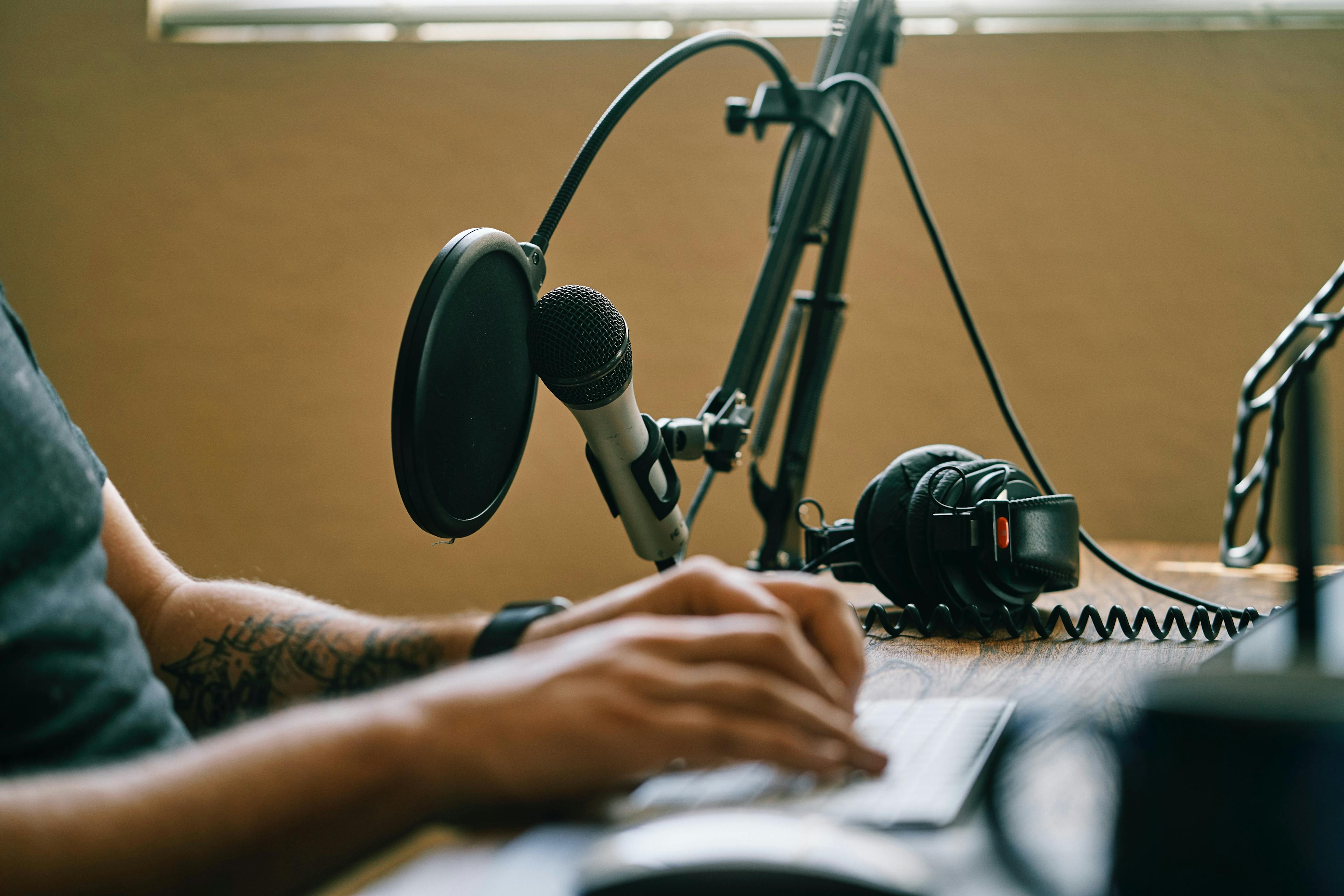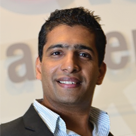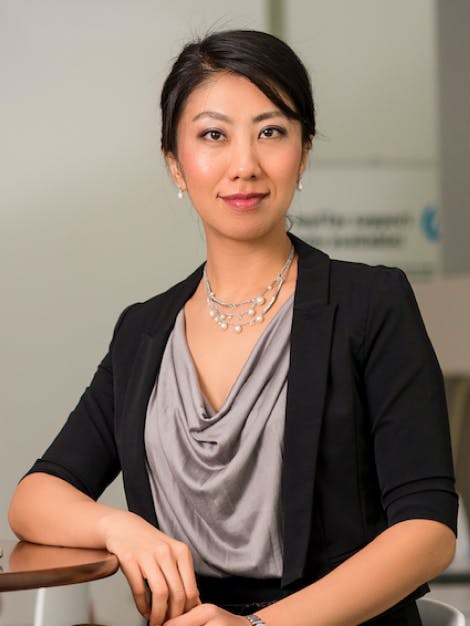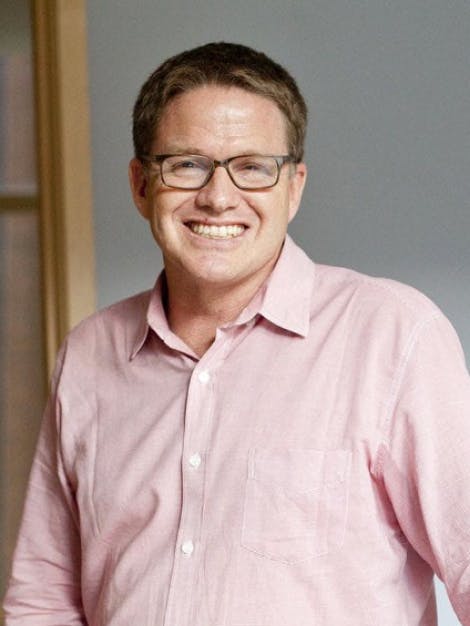Season 9 - Episode 7
Finding Your Feet as a Product Manager by Microsoft Product Lead
Fionna Gan is a Microsoft Product Lead, but she didn’t start out that way. She started out her product journey at the beginning of the pandemic, amidst hiring freezes and uncertainty. Here’s how she got a job despite the setbacks, and you can do it too!

Hello there. My name is Fiona. I am a Product Manager on Microsoft Teams, driving user engagement, making teams feel personalized, and that everybody gets their notifications. Before that I was a PM on Enterprise Product in Azure. And before I was a marketing intern at Amazon while pursuing a Bachelor’s in Engineering at the University of Toronto.
Since we’re talking about interview and onboarding to a new PM job during the pandemic, I think I have enough street creds on this because I started prepping in January of 2020, got an offer in May, and started in June. If you’re going through the same thing and maybe impacted by a hire freeze, or if you have visa issues like I did, I feel you. I’ve been there not long ago and it was stressful.
We can’t change the fact that recruiting is now a hundred percent virtual. Everyone’s mental and physical health has taken a toll, and the world just seemed to be in chaos since 2020. But I want to reassure you that this is doable. You will find your dream PM job during this trying time, and I’m here to offer for some help.
For today’s webinar, I will walk you through how I prepared for PM interviews, the tools and resources that helped me, how I balanced studying and a full-time job during the lockdown, tips I have for virtual interviews, and what I did while onboarding to the new team that gave me a great start.
I will also share the frameworks I used for answering PM interview questions and having effective one-on-ones with my new team. So be sure to stay tuned for those at the end.
Timeline
To set the context, I’ll share my timeline. I wanted a change in the new year, so I started reading books like Cracking the PM Interview and Decode and Conquer, but passively. Because I had an important project going on at work, which took most of my time, and I was unsure about what exactly I wanted to do next.
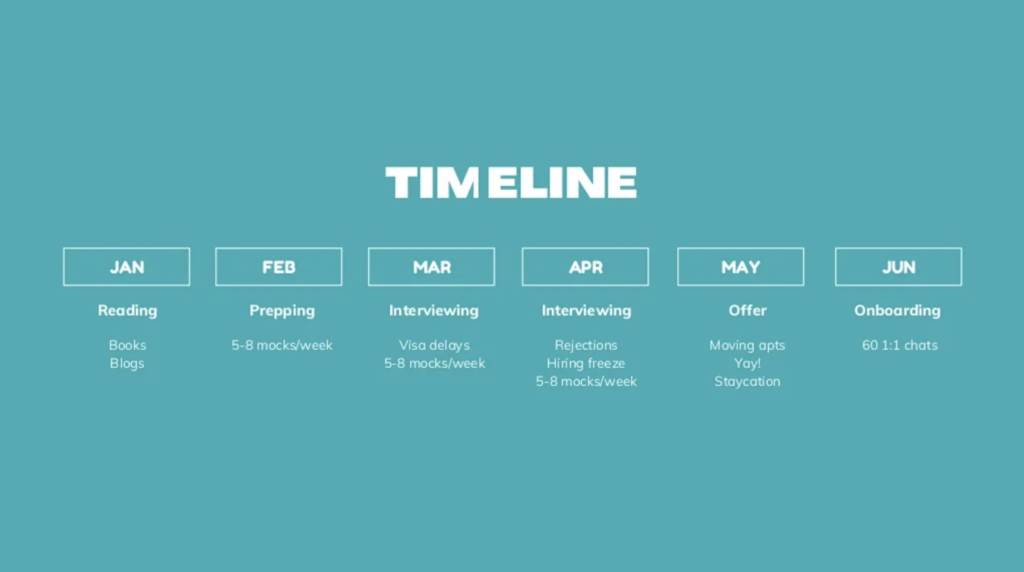
Then in February, I started scheduling mock interviews with people in the PM community, almost daily. I had a few first rounds and virtual onsites in March and was dealing with some visa issues at the same time, not fun. I got some rejections and was told there was a hiring freeze in April. I packed up and moved apartments in the beginning of May, went through more onsites, and finally got an offer. Then I took some time off between jobs and started in June. Now I’ve been on the team for almost a year, and I’m certain that I made the right call then.
Studying for interviews
There’s a ton of great resources on this topic already. I won’t cover everything, but I’ll share what worked for me during this unprecedented time. If you’re like me, who has been working as PM or even new to PM, you should know that PM interviews are not the same as what you do on the job. I recommend brushing up on what skills will be tested by reading books, such as Cracking the PM Interview and Decode and Conquer, and pay close attention to the framework suggested for answering questions.
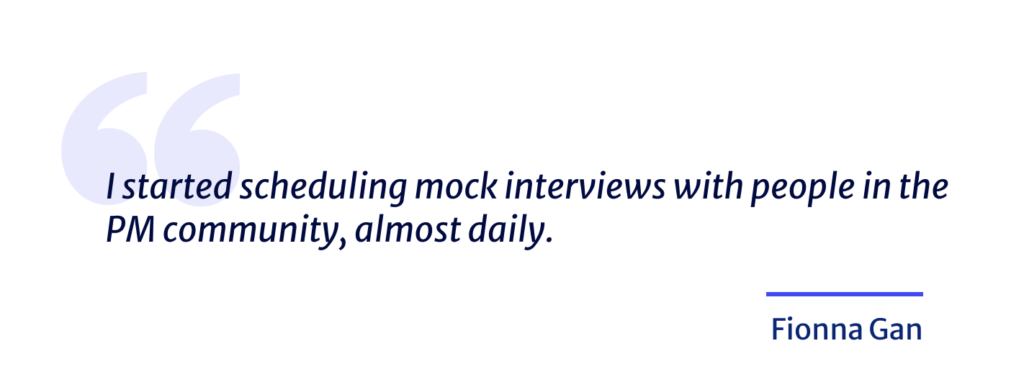
Then I leveraged Lewis Lin’s PM community on slack and scheduled mock interviews with other people who are also interviewing. A mock interview, if you’re not familiar, is typically one hour and consists of two people. You get asked a question by your partner and you have about 25 minutes to respond. After you’re done, your partner tells you how you did for about five minutes, and then you two swap. And you ask your partner a question and give feedback at the end.
This out to be the single most effective method to get interview practice. If you can only do one thing, I recommend this. If you’re not ready to put yourself out there, start doing interview questions on your own. thepminterview.com, Glassdoor, and the books that I mentioned are resources for questions. My pro tip here is to use a notebook and pen for these interview practices.
Check out our next Mock Interview event here: Product Management Mock Interviews: The Secret to Landing Your Dream Job
I like notebooks because I can write the points that I would say, draw UI wire frames or mind maps, and do simple calculations all on the same page. I find that this close mimics what happens during the real interview, where I’d be asked to show my wire frames to the webcam. However, if you’re more comfortable with tablets, those are great options too.
An important thing to remember when you’re practicing on your own is 1. talk out loud and 2. timebox yourself. At the beginning, it’s okay to take more time to think about a product design question in silence, just to ramp up, but keep in mind that you need to communicate your thought process throughout the interview so they know where your head is at.
Secondly, conveying your thoughts succinctly takes practice. So set a timer, identify where you tend to ramble and take some time to rephrase and wordsmith it and practice saying the new bit next time.
When you’re practicing with others, Calendly is a great tool for scheduling mock interviews. If you find a partner who is committed, gives great actionable feedback and is generally pleasant to talk to, grab onto that person and ask nicely for recurring mocks like once or twice a week. I was lucky to have found a few and we both could see our progress week after week.
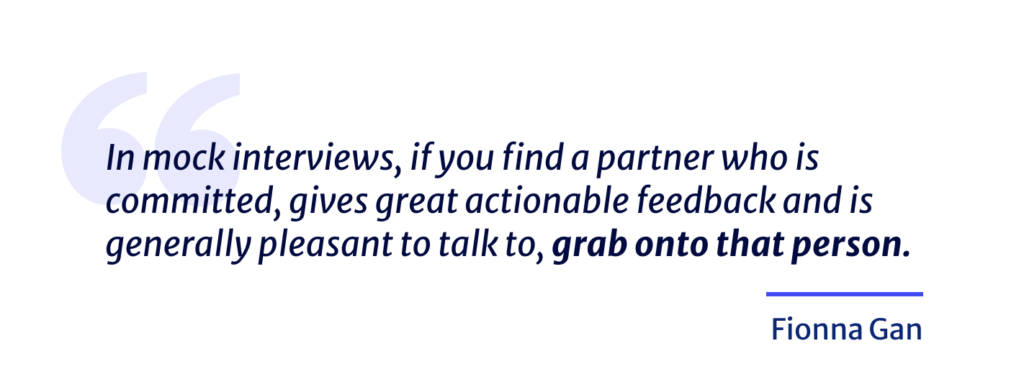
As you do these mock interviews, you’ll encounter many types of questions.
I made a library and picked out the ones I liked and asked them to my partners. This is also why mock interviews are such an effective method, because not only do you get to practice doing questions, you also hear how others respond: the techniques that they use, the mistakes they make that you’d avoid, and put yourself in the shoes of the interviewer and try to see what they’d be looking for in a response.
When it comes to practice interviews, give yourself some time to ease into it. It’s totally fine to take the crawl, walk, run approach. Make sure you understand the foundational PM concepts first, then develop a framework for answering each type of question and continue to revise them while practicing with others.
Balancing studying and a fulltime job
I was reading books and doing mock interviews while working a full-time job during lockdown. You might wonder how I managed my time while staying sane. Here is an actual week I had in March.
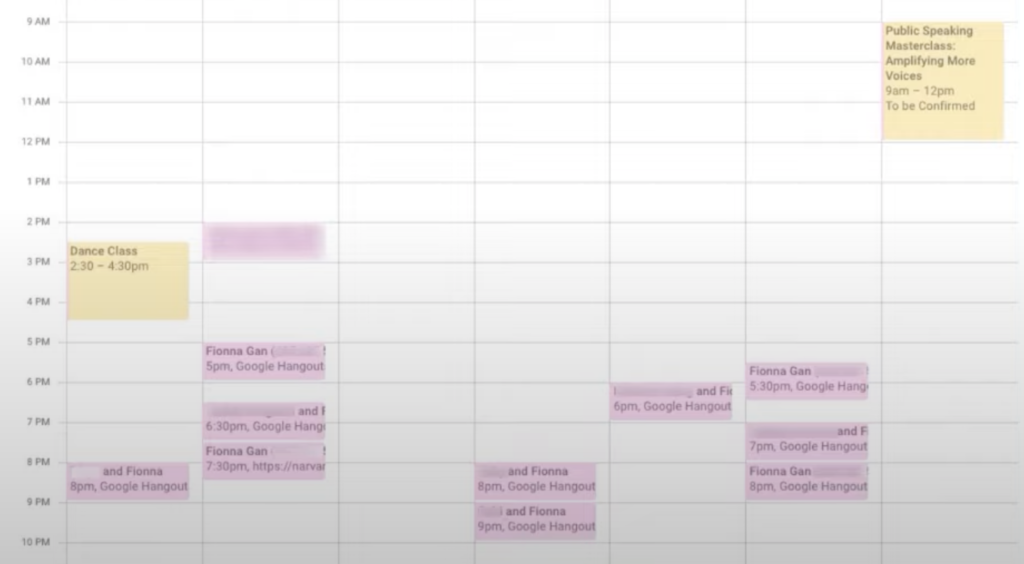
I worked from nine to five, Monday to Friday. I optimized my off hours in the evenings for studying and doing mock interviews. Once you start scheduling mocks, it’s easy to get carried away and try to schedule as much as you can, thinking that you’ll get better, faster. Sadly, no.
Practicing interviews is just like muscle building. You need to work out your brain and give it some rest for you to form that muscle memory. It’s impossible to get jacked in two days. So relax. Depending on your schedule and timeline, give yourself at least one free day of no mocks. Just like how I didn’t schedule anything on Tuesdays and Saturdays. Also, I set a rule to not have any mocks after 10:00 PM, so my brain can take a break before going to sleep.
Since Seattle was in lockdown, I couldn’t go out for social activities, which kind of worked out well in my favor. However, you can reduce social activities to have more time to prep, but please don’t eliminate them. Job hunting does feel like a solo fight that only you can compete in, but know that it’s not everything. You have and need a support network. It’s not worth it to miss a birthday party for a mock interview.
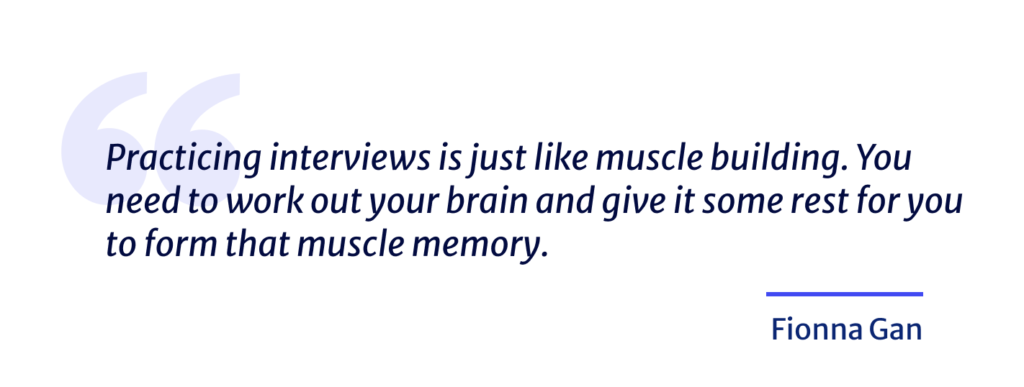
Along the same lines, I kept one activity that I loved, which was dance class every Sunday. I needed it to keep me active and sane. Also, I didn’t want to neglect any career growth and skill building opportunities, so I kept attending workshops that would be helpful to my career and job hunting. Win-win.
I don’t think I need to say this, but if you’re sick, cancel everything and get some rest. Even if you have an onsite that day, email them to reschedule at your earliest convenience. We’re in a middle of a pandemic. And even if for not, people will understand and can wait for a few days. Your health comes first above everything.
I know that prepping, applying and doing mocks is exhausting. So take care of yourself. You’re looking for change right now, probably because you don’t feel like the current situation is a good fit for you anymore. And you definitely don’t want to rush into something that doesn’t fit you either. You’ve got to love and be excited about that new opportunity and not compromise, but if you need food on the table, then by all means, take what you have and have a long term plan in mind.
Need clarity on your career? Check out the PM Career Vision Planner
Tip for virtual interviews
On the day of your interview, first of all, congratulations! You’ve got yourself an interview. And it’s probably virtual. But don’t worry. There are some advantages too. For example, you can have cheat sheets on your screen or print it out in front of you. And since you’re not in the same room as the interviewer, you’ll need to be more expressive, verbally and via body language.
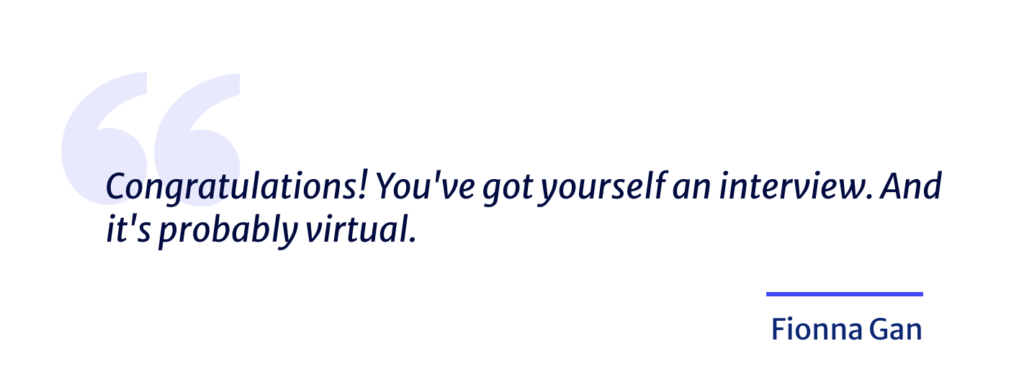
For example, repeat questions to make sure you heard it right, and use transition words to outline your structure such as first, I’m going to identify the users. Second, I’m going to list out their needs and lastly, brainstorm some solutions. It’s also helpful to summarize whenever you finish a section of the question, just in case audio or video, got cut off in between. And it’s totally fine to ask for water or bio breaks. You need them and they probably need them too.
If you know, you’re going to whiteboard or wireframe some UI, familiarize yourself with the tool that you’re going to use. If it’s not called out before practice with pen and paper or tablets.
Lastly, PM interviews can actually be really fun. I don’t enjoy prepping for them, but I love doing them. So sleep well. And don’t strain yourself too much. You’ve done what you could. Enjoy the conversations.
Read next: Is It Possible to Work Remotely as a Product Manager?
Must-dos for virtual onboarding
Moving on to onboarding, I onboarded in June and it’s been almost a year. Virtual onboarding sucks and can feel very isolating and just not welcoming. Looking back. There are a couple things that I did that I’m really glad and want to share with all of you.
First, it might sound trivial, but I made sure people knew that I’m here. Your manager should help you with this. My manager made a post with my photo and bio and I spoke up to introduce myself in team meetings. If I saw anyone I didn’t know.
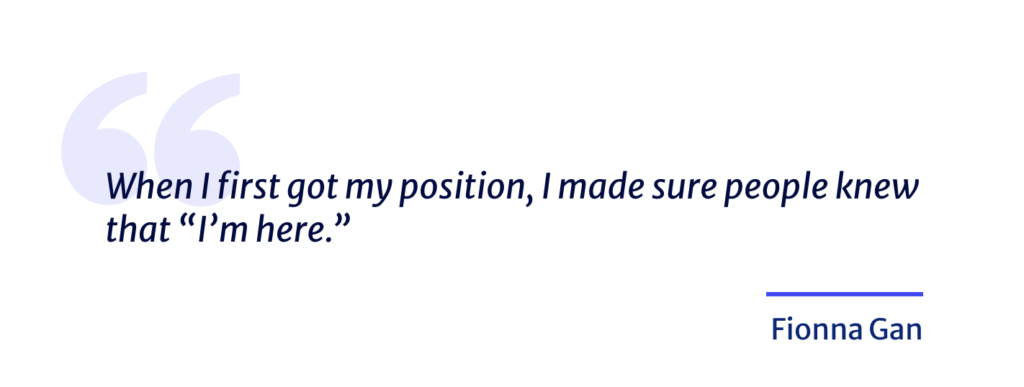
Second, besides the usual onboarding training, I dedicated my first three weeks for having virtual coffee chats with people. Typically these should be the people who you’ll work with very closely, but I went one step further and had about 60 chats with people in every discipline within my larger org. Products, engineering, design, research, marketing, QA, customer success, content, release management, you name it. And that saved me so much time later on, and I honestly wish I had done more. You can get a list of the people on your immediate team yourself. For others, ask your onboarding buddy, your manager, or mentor who else you should talk to. If you weren’t assigned an onboarding buddy or mentor, get one ASAP.
And if your manager hasn’t set up a recurring one on ones, ask them what’s a good cadence and set it up yourself, including one-on-ones with your skip manager and maybe even your directors, depending on your work structure. I can’t stress this enough. I know not everyone does it or likes it, but please, during these one-on-ones or team meetings, turn on your video. At least for the first 10 minutes during larger meetings, this is your chance to literally show yourself. And I think we all know by now that by having both people’s video on just feels so much more personable compared to talking to a photo or a black screen.
Hallmarks of a good first 1:1
This is what I call the hallmarks of a good first one on one. I’ve had 60 of these, and here’s what I would recommend you do. When you send out that invite, make sure the proposed time is within their working hours and include a friendly message in the meeting invite with a brief bio and what you’re hoping to learn from that person.
Yes. Turn your video on and ask the other a person to turn on theirs if they’re comfortable. And don’t dive into work right away, introduce yourself with your hobbies, new things you tried during the pandemic, a good movie that you watched. Try to get to know the other person as a person and work will follow naturally. I created a relationship database for everyone that I met and a template of topics and questions that I would ask everyone, which I will go in detail at the end.
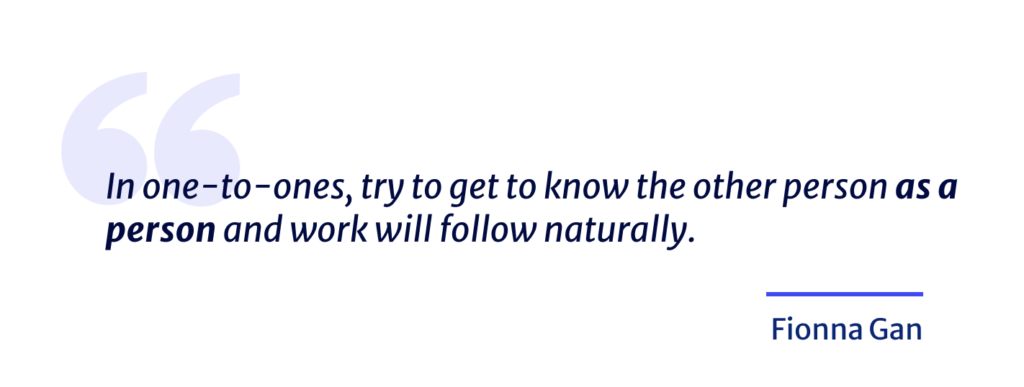
If you had a great conversation with someone or felt like they would be a great potential mentor, request for follow-ups and set up recurring chats. It is so critical to be proactive in virtual onboarding and make yourself seen and heard in a good way. People do enjoy seeing new faces, but they’re just so tired from all these serious meetings all day. So be a little bit extra delightful if you can, and exude positive energy when you meet them for the first time. A good impression will go a long way.
Other ways to connect
Lastly, join boot camps, communities, or hobby clubs sooner than later so you can quickly meet more people outside of your team and start building a support network. When you’re onboarding, also remember that you’re evaluating this new opportunity. Pay close attention to the team culture, product, and interest fit, growth potential, and how are people saying about this team? I think it’s wise to keep a logical mindset during your honeymoon period.
Frameworks and templates
Now moving on to the frameworks I used for product design questions and setting up one-on-ones with my new team. For product design questions, Lewis Lin talks about the CIRCLES framework in detail in his book. And I think it’s super useful.
However, to really understand the thinking behind it, I think is best to create your own framework that aligns with the approach that you’re most comfortable with. Here is my 10-step framework for a product design question inspired by the CIRCLES Method. And I have checked boxes for things that I need to think about and even transition words to help me move to the next step smoothly.
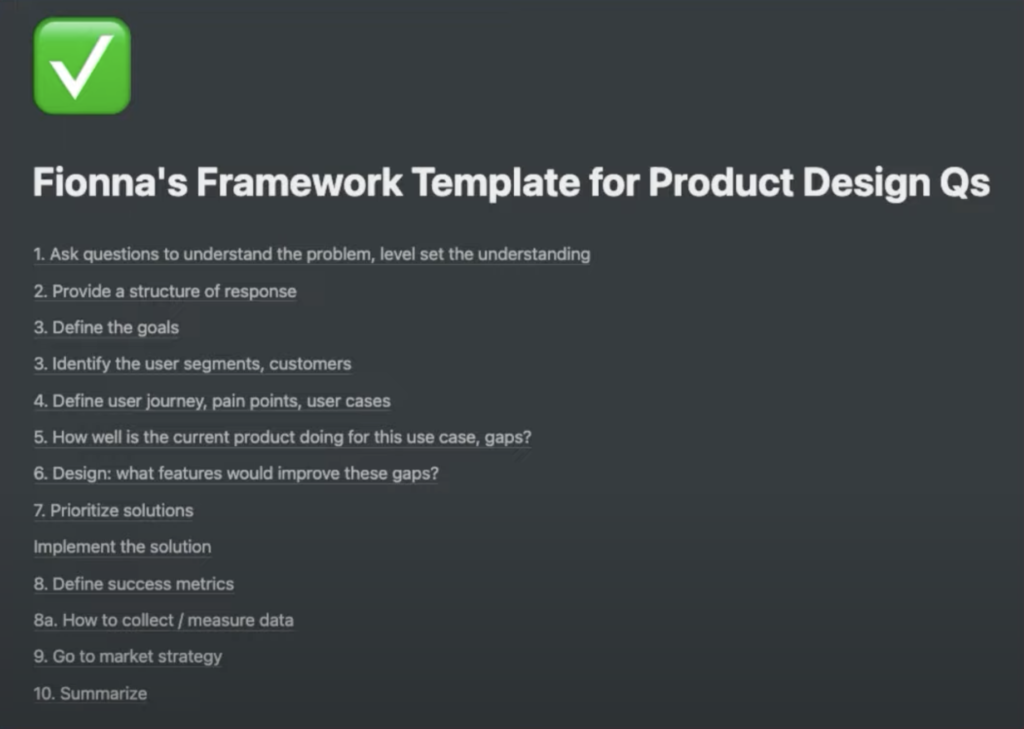
Before I start answering, I need to ask questions to level set. Then I give a structure of what my response will consist of. Then I define the goals. I then identify the users, their pain points and evaluate current products if any, and brainstorm solutions.
Then I use a modified RICE framework to prioritize my solutions with rationale then to find success metrics and how I could collect data. If there’s time, I’ll talk about my go-to-market strategy and end it off by summarizing my response. I’ve linked this template in the slide.
Another template to share with you is my one-on-one chat with all my team members. I find it super helpful to have a list of questions handy when going into a one-on-one, especially if I’m meeting that person for the first time. This template populates that automatically and reminds me to do some homework on that person by looking them up on LinkedIn. Also by asking these same questions to everybody, such as, What is your favorite feature in teams? Or, What would you like PMs to change? I was able to get a pull of data on where people stand in terms of the product and team dynamics and what I can do to make both better.
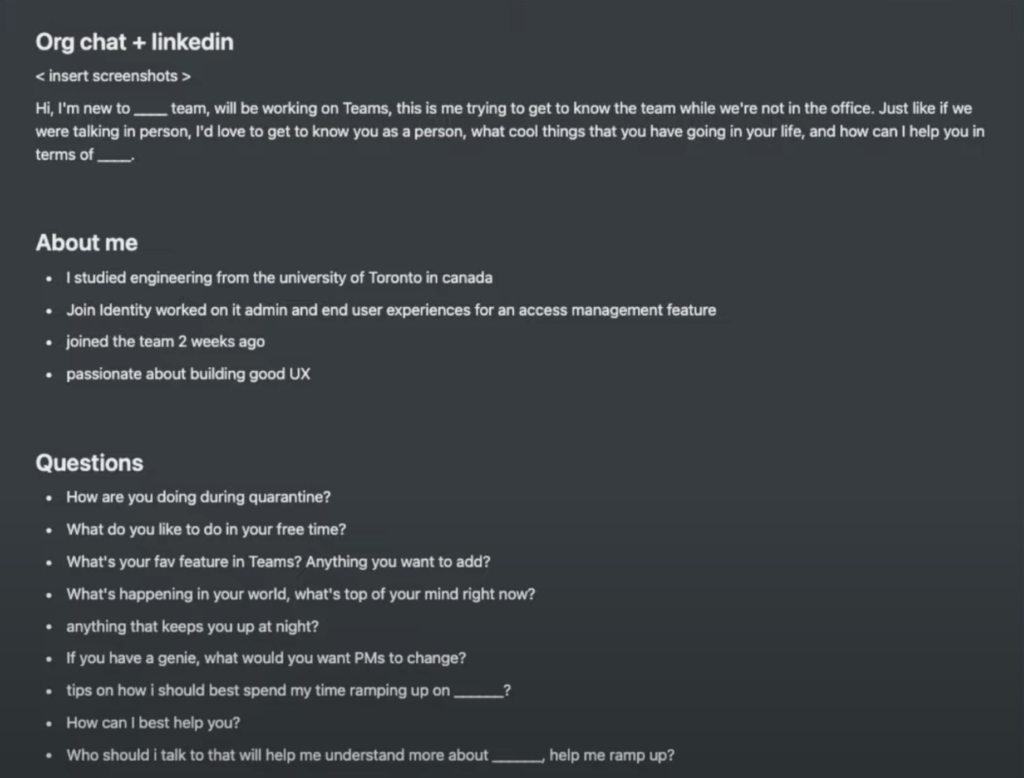
Bonus: To-do lists
Now, hopefully you have been equipped with new insights and tools on how to interview during this pandemic. My last gift to you is a to-do list from zero to a new job, depending on your timeline.
If you have six months or more until you want a new job, you can start by reading books like Cracking the PM Interview, Decode and Conquer, and this awesome blog by Intercom on product building, marketing and execution. There are also some great PM mock interviews by Exponent, lots of questions from thePMInterview.Com, Glassdoor. And you definitely have to join Lewis Lin’s Slack community to schedule mock interviews with people. Try to do three to five mock interviews a week and share your thoughts on everything product. If you have time, use Figma or other prototyping tools to build UIs for app ideas that you have.
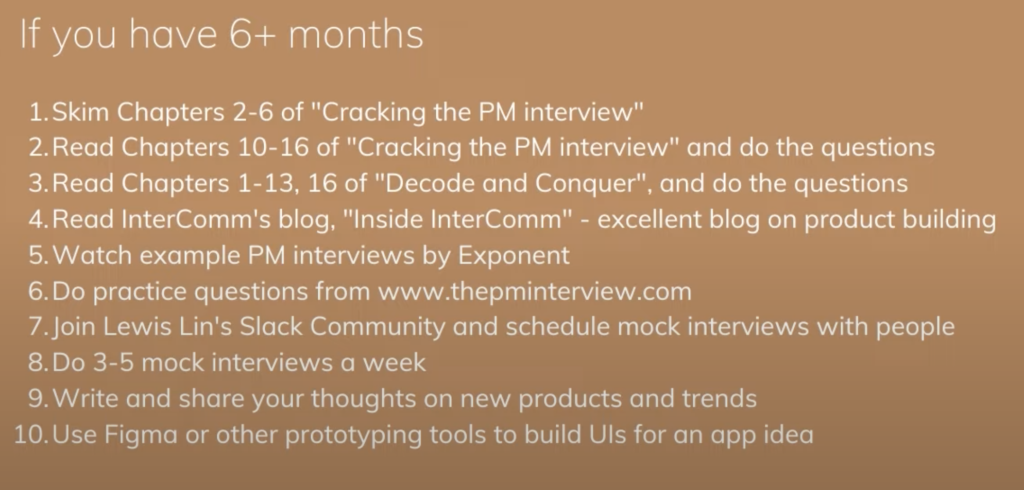
What if you don’t have that much time and need a job within three months? You can do pretty much what was talked about in the previous slide and just take out the parts where you think it’s not necessary. Here, I recommend focusing on practicing mock interviews with the PM community and reading the two books to familiarize yourself with the concepts once again, and do five to seven mock interviews a week.
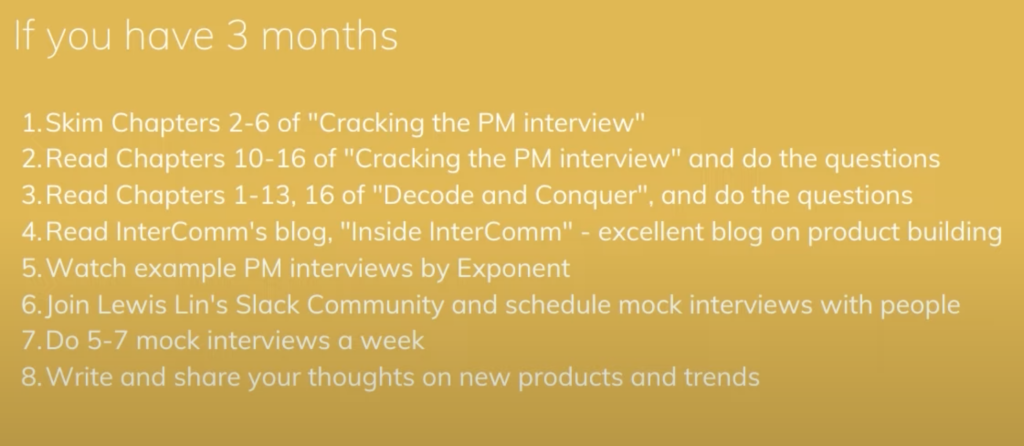
What if you just have a month or you need a job ASAP? I highly recommend focusing on these mock interviews again and sharing your thoughts on products. Because by writing your thoughts, it clears your mind and helps you facilitate conversations during the interview.
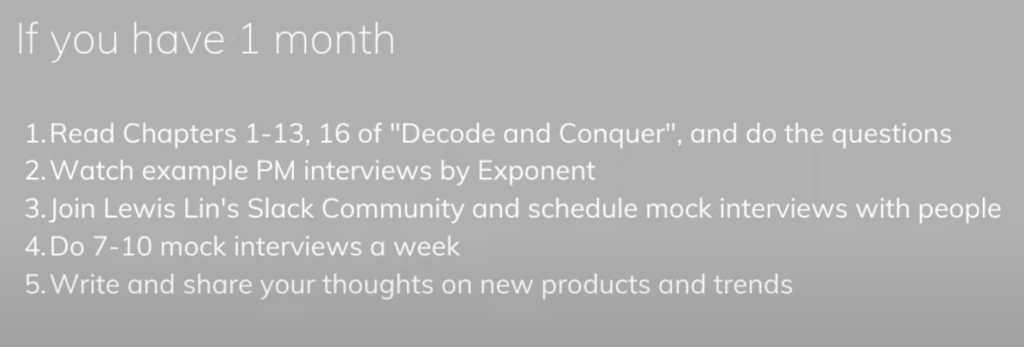
That is what I had to share on preparing for interviews and onboarding to a new PM job during the pandemic. I sincerely hope you learned something new and please don’t hesitate to reach out if you have questions. I just got back to vlogging so you can catch me on YouTube and Twitter. I also write a weekly newsletter called The Creative Outlet where I share my thoughts on PM, design, productivity, languages, anything that makes me feel creative. If you find that intriguing, give it a read and let me know what you think. This is my second talk at Product School. If you’re interested, you can sign up or watch the recordings of my other talks. Congratulations for making it this far, and I can’t wait to see you in the next one!
Listen to our episodes on your favorite platform
Stay tuned for new episodes
By sharing your email, you agree to our Privacy Policy and Terms of Service
